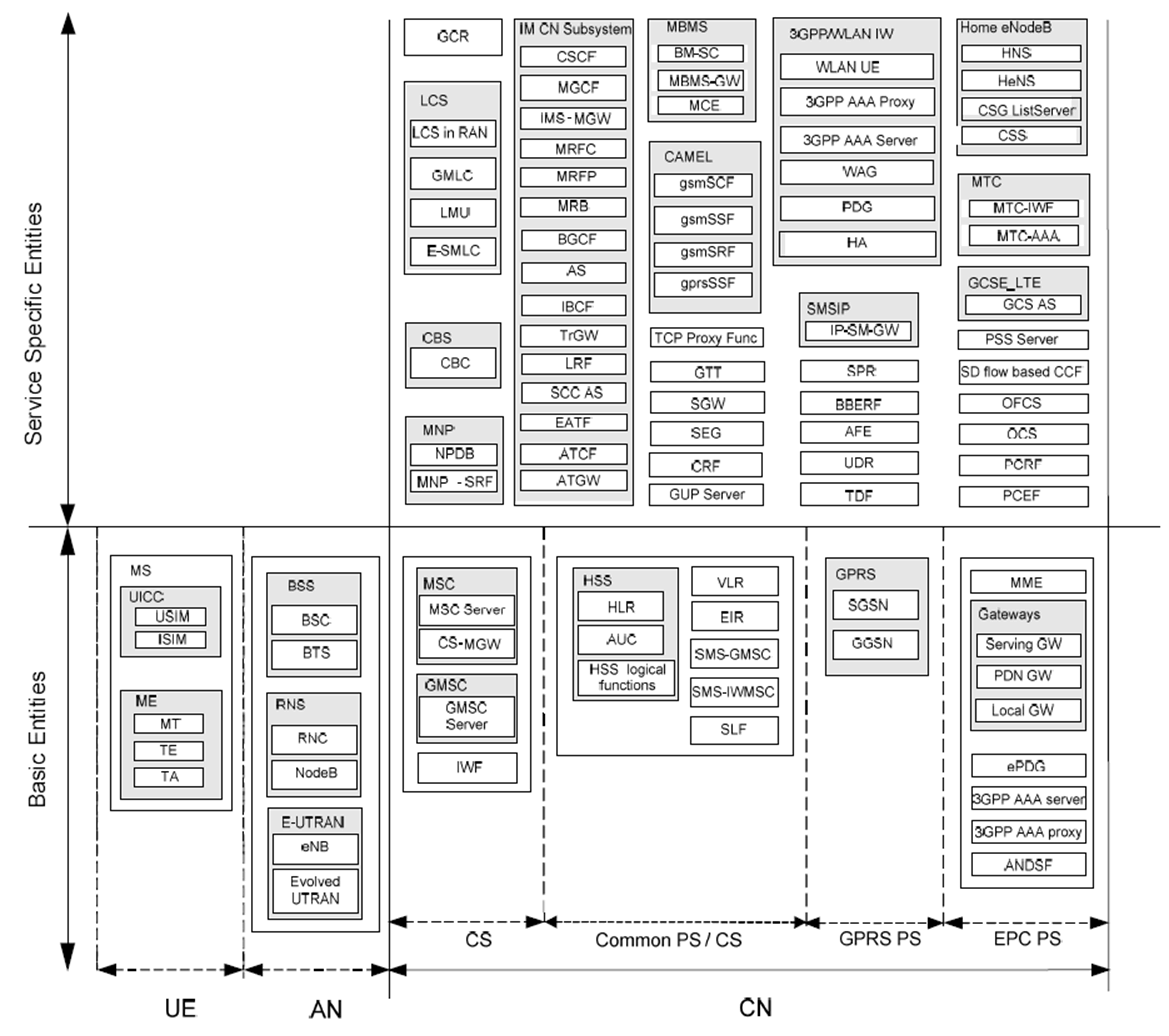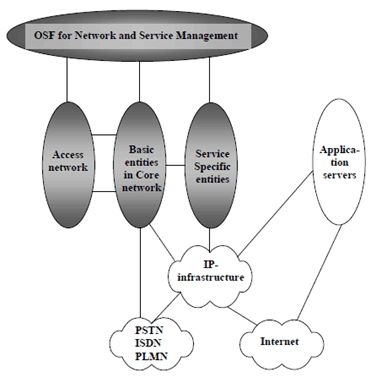Content for TS 32.102 Word version: 17.0.0
7.3.3 Entities of a 3GPP system
7.3.4 Open systems approach
7.3.5 Level of openness
7.3.6 Closed interfaces
...
...
7.3.3 Entities of a 3GPP system p. 19
To provide the mobile service as defined in a 3GPP system, some specific functions are introduced [12]. These functional entities can be implemented in different physical equipments or gathered. In any case, exchanges of data occur between these entities and from the Telecom Management perspective they can all normally be treated as network elements. The basic telecom management functional areas such as fault management, configuration management, performance management and security management are all applicable to these entities. As such they are all the targets for 3GPP Telecom Management technical Specifications.
As discussed in clause 5, there will be many possible ways to build a 3GPP system and thereby many possible architectures of a mobile system. The entities presented in Figure 7.3 should be treated as the fundamental building blocks of any possible implementation of a 3GPP system.

Figure 7.3.3.1: Examples of entities of the mobile system to be managed
(⇒ copy of original 3GPP image)
(⇒ copy of original 3GPP image)
In figure 7.3.3.2 the prime domains for the standardisation effort of 3GPP Telecom Management are shown as shaded.

7.3.4 Open systems approach p. 21
Even in the second generation of mobile radio networks the operators have to cope with heterogeneous environments in many different ways. No single vendor is likely to deliver all the management systems needed for a mobile operator.
The many different types of network elements, some with very high management complexity such as an exchange and some less complex such as a repeater system, are generally supported with unique vendor specific management systems with very low interoperability. Duplicated TMN applications is another obvious reality of this generation of management systems. This will be further discussed under clause 9 (TMN Applications).
The 3GPP requirements call for open systems that can be supported by the marketplace, rather than being supported by a single (or limited) set of suppliers, due to the unique aspects of the design chosen. Open systems architectures are achieved by having the design focus on commonly used and widely supported interface standards. This should ensure costs and quality that are controlled by the forces of competition in the marketplace.
The open systems approach is a technical and business strategy to:
- Choose commercially supported specifications and standards for selected system interfaces.
- Build systems based on modular hardware and software design.
- Those adopted by industry consensus based standards bodies or de facto standards (those successful in the market place).
- Market research that evaluates the short and long term availability of products.
- Trade-offs of performance.
- Supportability and upgrade potential within defined cost constraint.
- Allowance for continued access to technological innovation supported by many customers and a broad industrial base.
7.3.5 Level of openness p. 21
The level the interfaces conform to open standards is critical for the overall behaviour. A low level of openness will severely impact on long-term supportability, interoperability, development lead-time, and lifecycle cost and overall performance.
Interfaces are expensive parts in a TMN and interfaces with low level of openness severely impact on development lead-time for the introduction of any system, application component or service. Easy implementation (plug and play) is a requirement for TMN physical entities and requires a high the level of openness.
7.3.6 Closed interfaces p. 21
Many second-generation mobile network physical management entities have vendor controlled system/subsystem boundary descriptions that are not disclosed to the public or are unique to this single supplier - closed interfaces.
Such interfaces will not fulfil the basic requirements of a 3G TMN. Closed interfaces can only be used as internal interfaces where no information what so ever has to be shared to other physical management entities.